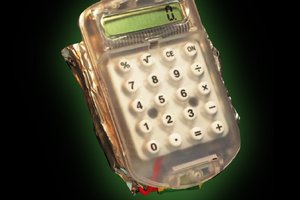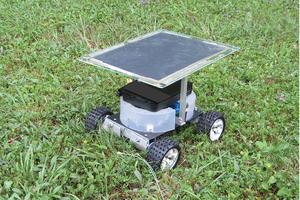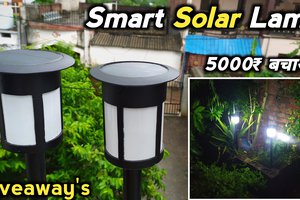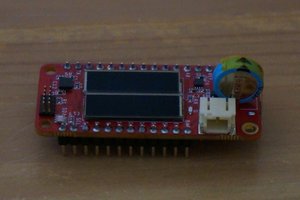As the cost of energy and everything else continues to rise, more home owners across the country are installing grid connected PV systems. And as micro-controller power requirements have also decreased, energy harvesting for projects as well as remote equipment is also on the rise. Solar is a great choice for many of these applications. It is a great trend, replacing the use of fossil fuels with clean green power.
Problem:
Although the use of solar power is increasing, many locations still cannot enjoy the benefits of solar energy due to obstructions such as trees, landscaping and so on. Many of these locations have areas that receive full sun light for a short period of time during the day, but as the sun moves across the sky, these areas also move.
Solution:
Sun Chaser is an open source mobile robot with a motorized solar panel mounted on top. Sun Chaser’s main purpose in life will be to find the brightest sunlight with a camera and onboard controller running segmentation and position its solar panel toward the sun and charge its on-board batteries. Running segmentation will allow Sun Chaser to see and ovoid objects and see the best sun light locations. Six photo resisters positioned around two curved surfaces on Sun Chaser will be used to detect the direction of the brightest light. This will allow Sun Chaser to both find the brightest light and stay pointed toward the sun. The top-mounted solar panel will also be able to tilt to obtain the most light possible.
All of Sun Chaser’s motors and sensors will be handled by a Squid motor control board. A Raspberry Pi Nano will also be on board to provide an on-board website to allow the owner to communicate with Sun Chaser and also to allow a docking station to communicate with several Sun Chasers through a WiFi network. The owner can also command the Sun Chaser via WIFI to move so locations on the yard can be mowed.
After Sun Chaser has charged it’s on-board batteries, either Sun Chaser can dock with a docking station to deliver its power to a stationary load such as remote equipment or a home, or the owner can individually remove batteries from Sun Chaser’s battery compartment to power projects, phones or any gadget that can be powered by a lithium ion battery.
Advances in deep learning has allowed Sun Chaser's GPS to be replaced with a camera. Object detection allows other Sun Chasers and the docking station to be located. Segmentation allows objects to be located, and shady versus sunny spots can now be easily mapped. These are the biggest improvements of Sun Chaser 2 versus the original Sun Chaser.
3D printed parts are being designed and printed. Updates will be added soon.
*License GPLv3 unless stated otherwise for all software. License details available in the GitHub repository.*
*License CC 4.0 unless stated otherwise for all hardware. License details available in the GitHub repository.*
Sun Chaser’s light tracking test:
 Dennis
Dennis


 Tom Farnell
Tom Farnell

 ASHUMHRPROJECTS
ASHUMHRPROJECTS